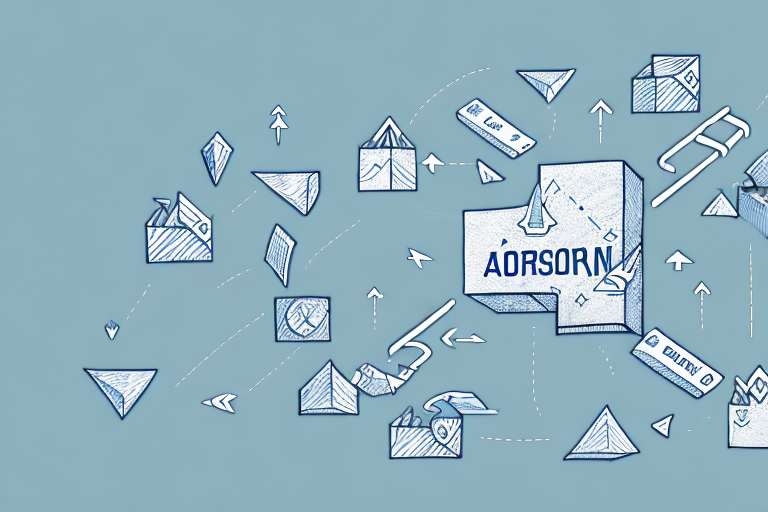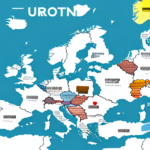Understanding the Benefits of BTI: Binding Tariff Information for Supply Chain Management
In today's highly competitive business environment, supply chain management is of utmost importance. As businesses seek to streamline their operations and optimize their supply chains to maximize profits, they must navigate a complex web of rules and regulations, including customs procedures and tariffs. One effective solution for simplifying this process is Binding Tariff Information (BTI).
What is BTI and How Does it Work?
BTI is a legal ruling issued by customs authorities that confirms the proper classification of goods for customs purposes. This provides certainty about how a particular product will be classified and valued by customs authorities in a specific country. The binding nature of BTI means that customs authorities are legally obligated to abide by the ruling for up to six years, ensuring consistency and predictability for businesses.
BTI is particularly useful for companies that import or export goods regularly, as it helps them understand the customs duties and taxes they will owe. This clarity aids supply chain planners in optimizing their operations and reducing the risk of unexpected costs or delays.
Additionally, BTI assists companies in avoiding potential legal issues related to customs compliance. By obtaining a BTI ruling, businesses can ensure accurate product classification and correct payment of duties and taxes, thereby avoiding penalties and fines associated with non-compliance.
Furthermore, BTI enhances a company's competitiveness in the global marketplace. With a clear understanding of customs duties and taxes, companies can better price their products and compete effectively with international counterparts, expanding their customer base and increasing profits.
For more detailed information on BTI, refer to the [European Commission's BTI Information Page](https://ec.europa.eu/taxation_customs/business/calculation-customs-duties/customs-classification-binding-tariff-information-bti_en).
The Historical Background of BTI and Its Evolution Over Time
The concept of BTI originated in the 1970s when the European Union (EU) introduced the Common Customs Tariff. BTI was developed to provide legal certainty for businesses importing and exporting goods to and from the EU. Over time, other countries and regions, including the United States and Japan, have adopted similar customs procedures.
Today, BTI remains a crucial tool for businesses operating in global markets, helping them navigate the intricate landscape of customs regulations and avoid unexpected costs or delays. As global trade has grown more complex, the importance of BTI in optimizing supply chains and mitigating risks has only increased.
However, BTI faces challenges such as keeping pace with constantly evolving customs regulations and procedures. Businesses must stay informed about the latest developments and adapt their processes accordingly. The increasing integration of technology in customs procedures offers opportunities for operational streamlining but also introduces new risks related to data security and privacy.
Why Should Your Business Use BTI for Supply Chain Management?
The benefits of BTI for businesses are extensive. Implementing BTI can help businesses:
- Reduce the risk of unexpected costs or delays associated with customs procedures
- Ensure compliance with customs regulations
- Optimize their supply chains
- Improve their bottom line
In addition to these benefits, BTI provides personalized support and guidance throughout the supply chain management process. Expert teams can offer tailored solutions to address specific business needs and challenges, enhancing operational efficiency and profitability.
According to a study by the World Customs Organization (WCO), businesses utilizing BTI effectively can experience up to a 20% reduction in supply chain disruptions.
Improving Your Business's Bottom Line with BTI
One of the primary benefits of BTI is its ability to improve a business's bottom line. By providing legal certainty regarding customs duties and taxes, BTI helps businesses avoid unexpected costs and plan more effectively, thereby reducing overall operational costs and increasing profits.
Optimizing supply chains through BTI can also decrease the time and resources required to import and export goods, leading to increased productivity and enhanced efficiency at every stage of the supply chain.
Moreover, BTI assists businesses in maintaining compliance with international trade regulations. Ensuring products meet necessary standards and regulations helps avoid costly fines and supply chain delays, maintaining a positive market reputation and fostering stronger relationships with customers and partners.
For more insights on the financial impacts of BTI, visit ShipScience's case studies.
A Closer Look at the Legal Framework Behind BTI
BTI operates within a complex legal framework of rules and regulations at both national and international levels. In the EU, BTI is governed by the EU Customs Code, which outlines the procedures for issuing and appealing BTI rulings.
Understanding this legal framework is essential for businesses to ensure compliance with all relevant regulations, thereby avoiding costly penalties and ensuring smooth operations.
International agreements and conventions, such as the Harmonized System (HS) Convention and the World Customs Organization's Classification Guidelines, further standardize the classification of goods and determination of tariff rates, which are fundamental for international trade.
Understanding the Role of Customs Authorities in BTI
Customs authorities are pivotal in the BTI process. They issue BTI rulings and enforce customs regulations, making it crucial for businesses to collaborate closely with these authorities to ensure compliance and smooth operations.
Key responsibilities of customs authorities in the BTI process include determining the correct classification of goods by examining their physical characteristics and intended use to assign the appropriate tariff code. This classification directly influences the duties and taxes applied to the goods.
Beyond issuing BTI rulings, customs authorities facilitate trade by streamlining customs procedures and reducing trade barriers, which helps businesses save time and reduce costs. Effective collaboration with customs authorities allows businesses to benefit from efficient customs processing and ensures that goods move swiftly through the supply chain.
For detailed information on the role of customs authorities, refer to the [World Customs Organization's official site](https://www.wcoomd.org/en-glossary/customs-terms.aspx).
How to Apply for a Binding Tariff Information Ruling
Applying for a BTI ruling can be intricate, particularly for businesses unfamiliar with customs procedures. However, many countries and regions offer detailed guidance on their official websites to assist businesses in navigating the process.
Businesses must provide comprehensive information about the products they intend to import or export, including details on composition, intended use, and value. Accurate information is critical to ensuring that the BTI ruling correctly reflects the product's customs classification.
It's important to note that the application process for a BTI ruling varies by country or region. Some jurisdictions require applications to be submitted through specific government agencies, while others allow direct submissions to their customs departments.
For step-by-step guidance, businesses can refer to the [EU's BTI Application Procedure](https://ec.europa.eu/taxation_customs/business/calculation-customs-duties/customs-classification-binding-tariff-information-bti_en).
Tips for Successful Implementation of BTI in Your Supply Chain Strategy
Successfully implementing BTI in your supply chain strategy involves several key practices:
- Proactively seek BTI rulings: Obtain BTI rulings for your products in advance to prevent delays and unexpected costs.
- Collaborate with customs authorities: Maintain open communication with customs authorities to ensure ongoing compliance.
- Train your staff: Educate your team on customs procedures and regulations to enhance operational efficiency.
- Integrate BTI into planning: Incorporate BTI considerations into your supply chain planning and decision-making processes.
- Regularly review your strategy: Continuously assess and optimize your supply chain strategy to maintain efficiency.
Establishing clear communication channels with suppliers and customers is also vital. This ensures that all parties are aware of BTI requirements and can collaboratively work to meet them.
Staying informed about changes in BTI regulations and requirements is crucial. Businesses should regularly monitor industry news and participate in relevant conferences and events to stay updated. This proactive approach helps ensure that your supply chain strategy remains compliant and efficient.
For additional strategies, consult resources like [ShipScience's Supply Chain Optimization Guide](https://www.shipscience.com/resources/supply-chain-optimization).
Exploring the Limitations and Risks of Using BTI
While BTI is a valuable tool for optimizing supply chains, it comes with certain limitations and risks:
- Time-bound rulings: BTI rulings are typically binding for six years, requiring businesses to reapply periodically to maintain certainty.
- Potential challenges: Customs authorities may challenge BTI rulings, leading to additional costs and delays.
- HS Code dependency: BTI applies only to goods classified under existing Harmonized System (HS) codes. New products without specific HS codes cannot utilize BTI, necessitating alternative classification methods.
Businesses must carefully weigh these limitations and risks before incorporating BTI into their supply chain strategies. Effective risk management strategies and contingency planning are essential to mitigate potential challenges.
Case Studies: Real-Life Examples of Businesses Benefiting from BTI
Numerous businesses have successfully implemented BTI to enhance their supply chain strategies:
- Global Electronics Manufacturer: By obtaining BTI rulings, this company reduced customs duties on EU imports by 30%, significantly lowering operational costs.
- Global Fashion Retailer: Securing BTI rulings for textiles and clothing allowed this retailer to optimize its supply chain, reducing costs and improving efficiency.
These case studies demonstrate how BTI can lead to substantial financial and operational benefits, reinforcing its value as a critical tool in supply chain management.
Explore more success stories at [ShipScience's Case Studies](https://www.shipscience.com/resources/case-studies).
Comparing BTI with Other Customs Procedures and Regulations
BTI is one of several customs procedures and regulations that businesses must navigate when importing and exporting goods. Other key procedures include:
- Customs Valuation: Determines the value of goods for duty purposes.
- Rules of Origin: Establishes the originating country of goods to determine eligibility for tariffs and trade agreements.
- Trade Agreements: Bilateral or multilateral agreements that affect tariffs and trade regulations.
Understanding the differences and intersections between these procedures is essential for businesses to make informed decisions, ensure compliance, and optimize their supply chains effectively.
For a comprehensive comparison, refer to the [World Customs Organization's Customs Procedures Overview](https://www.wcoomd.org/en/topics/customs-procedures-overview.aspx).
Conclusion
Binding Tariff Information (BTI) is a powerful tool for businesses aiming to optimize their supply chains and reduce costs. By providing legal certainty regarding customs duties and taxes, BTI helps businesses avoid unexpected expenses and delays, enabling more effective planning and operational efficiency.
However, businesses must also consider the limitations and risks associated with BTI, such as time-bound rulings and potential challenges from customs authorities. Ensuring compliance with all relevant customs procedures and regulations is paramount to fully leveraging the benefits of BTI.
Overall, BTI serves as a critical component in the strategic management of international supply chains, offering significant advantages in cost savings, compliance, and competitiveness in the global marketplace.






















